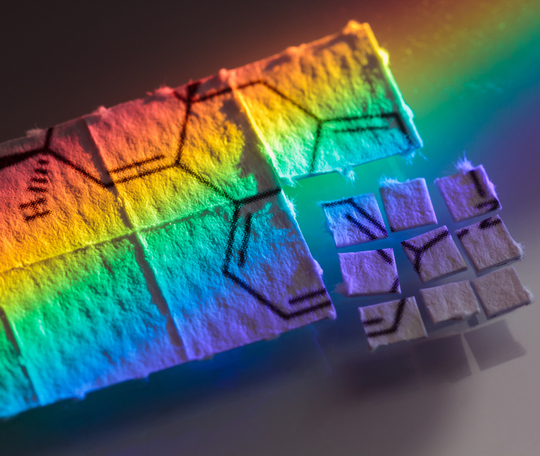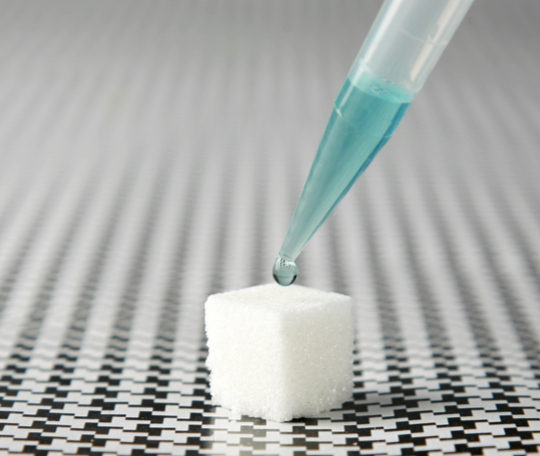PHARMACOLOGY PROFILES
LSD
Lysergic acid diethylamide
C20H25N3O
Drug Classification
Lysergamide
Common Names
Lucy, Acid, Tabs, Blotter
Precursors
Ergot (rye infected by the ascomycete fungus Claviceps purpurea), commonly used to derive ergotamine.
Lysergic Acid Amide (LSA), also known as ergine and found in the seeds of many Convulvaceae (Morning Glory) species. Ergine can theoretically be used to synthesize LSD, however it is highly impractical.

Ergotamine/Ergonovine

Ergot fungus on rye

lysergic acid amide (LSA) (found in
morning glory seeds)
Overview
Lysergic acid diethylamide, best known as LSD, is derived from a chemical found in rye ergot fungus. It was discovered in 1938 when Swiss chemist Albert Hofmann created LSD-25, his 25th ergot-based compound, in an attempt to stimulate the respiratory and circulatory systems. The effects LSD has on the central nervous system (CNS) were unknown until 1943, when he accidentally tested it on himself. This discovery led to a deeper understanding of the brain’s neurochemistry and helped therapists effectively treat a wide range of conditions. After his profound experience with the substance, it was tested and studied for its therapeutic benefits by psychologists, researchers, and scientists throughout the 1950s. During that time, LSD was prescribed to tens of thousands of patients and over 1,000 research papers were produced. By the height of the 60s and 70s counterculture movement, the substance became synonymous with hippies and social outcasts. In 1971, the US government declared LSD a Schedule I substance and effectively ended research and development for several decades.
Now, more than 50 years after LSD was first banned, it has resurfaced as a potential therapeutic drug and is being studied by highly accredited hospitals and foundations. Research shows that this experimental substance can help treat alcoholism, drug addiction, cluster headaches, trauma-related pain and end-of-life anxiety far more effectively than the medicine that is commonly pushed by pharmaceutical companies and the government. One of the most notable foundations backing these studies is the Beckley Foundation, which has funded many ground-breaking studies regarding LSD’s effects on the brain. In 2019, Johns Hopkins opened the first research facility dedicated to psychedelic drug studies in the US: Johns Hopkins Center for Psychedelic and Consciousness Research.
It is highly recommended to use harm reduction practices when using this substance.
Dose and Duration
A dose of LSD is measured out by micrograms (µg). A moderate dose will produce noticeable effects, such as introspection and euphoria, while stronger doses can bring about a potent, mystical experience.
The general recommend dose is as follows:
- Light: 25 – 75 µg
- Medium: 75 – 100 µg
- Strong: 150 – 300 µg
- Heavy: 300+ µg
A tab, normally made of blotter paper or gelatin, is usually 100 µg while popular iterations of the drug, such as the quintessential Orange Sunshine were about 250µg per serving, roughly 2.5 tabs. The effects of LSD typically last 8 to12 hours, with after effects lasting 12 to 48 hours.
Effects
LSD is the parent compound of the lysergamides family and serves as a model for the compounds that stem from its structure. The psychedelic effects of LSD are brought on by binding to 5-HT2A receptors, a serotonin receptor subtype. What makes LSD especially unique is that it is also dopaminergic and binds to dopamine receptor D2. This is uncommon in most serotonergic psychedelics.
5-HT2A receptors are involved in the cognitive processes that take place in the prefrontal cortex of the brain. This area is responsible for complex cognitive behavior, such as social behavior, decision-making and expression of personality. This is also where the brain processes information from other systems and forms goal-oriented decisions.
Experience
The subjective effects of LSD range from visual and auditory to cognitive and physical. There are also many contributing factors that will affect one’s experience on LSD, from set and setting to personal body chemistry. Depending on the dosage, subjective effects may progressively intensify. It can be common for users to experience open- and closed-eye visuals, internal and external hallucinations, introspection, pain relief, distortion of time and, with a strong dose, ego death.
Adverse effects that can contribute to a bad experience include anxiety, paranoia and delusions. If felt, experts recommend submitting to the emotions and riding them out with most adverse effects subsiding over the first couple of hours.
Other shared experiences include:
- Spontaneous Body Sensations
- Excessive Yawning
- Teeth Grinding
- Shifting of Colors
- Distortion of Depth Perception
- Tracers
- Enhanced Creativity
- Acceleration of Thought
Benefits
Aside from spiritual growth and self-exploration, LSD helps heal trauma and can positively change one’s life. During the 1960s and again in 2012, LSD was researched as a treatment for alcoholism. Both studies revealed that the substance helped reduce the levels of alcohol misuse for months following administration.
Other studies show that a sub-perceptual doses of LSD can help reduce acute or chronic pain related to major trauma and can help decrease end-of-life anxiety in terminally-ill patients.
Risks
LSD is non-addictive and has extremely low toxicity rates and potential for abuse. Research shows there are no long-lasting effects, but in extreme cases one can experience delusion or psychotic episodes that can trigger trauma.
Those with underlying mental conditions, such as bipolar disorder or schizophrenia, should speak with a healthcare professional before experimenting with LSD, as it is known to trigger symptoms.